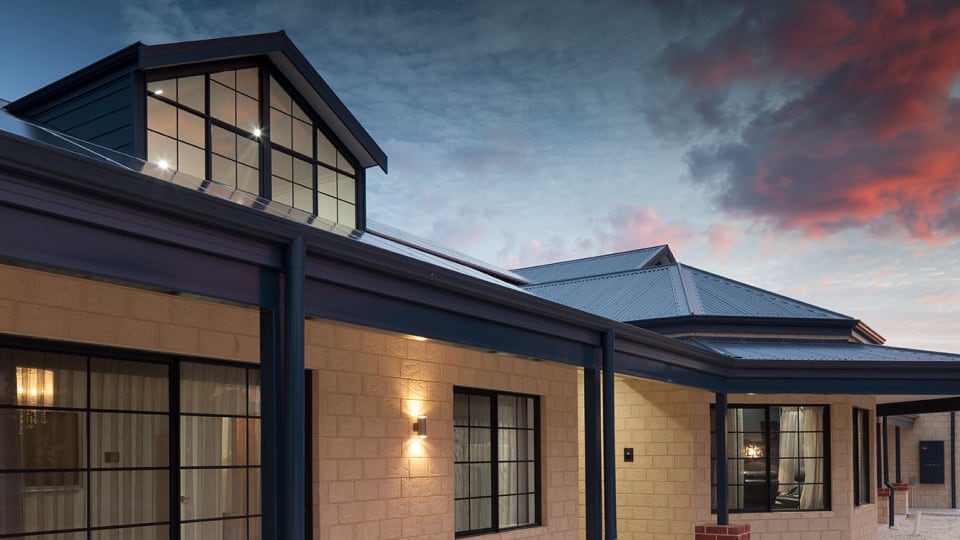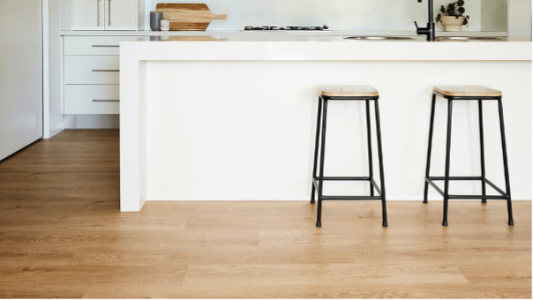Making the Tree Change
Making the Tree Change
WANT TO ESCAPE THE RAT RACE?
With the scarcity of affordable inner city housing blocks and the current trend for smaller, narrower cottage lots in new sub-divisions and land estates, the demand for a “tree change” to rural areas is growing – and at a rapid rate! Our clients are opting to embrace the serenity of wide open spaces by moving further away from the city limits. And with affordable acreage blocks now available within 45 minutes’ drive of the Perth CBD, commuting to and from work along major transport arteries is within easy reach of most modern families.
LIVE LIFE AT A NEW PACE
With the release of our Rural Retreat Range and the flagship Sanctuary home design, Shelford Quality Homes has identified a niche in the marketplace which few Perth builders are currently addressing. And with the “tree-change” becoming a popular lifestyle choice with Western Australians today, Shelford Quality Homes has acquired a significant level of site experience and expertise building on rural blocks, including an understanding of the unique implications of long power runs, design guidelines and building envelopes, soil conditions, bush fire risks, retaining and septic disposal.
So if getting out of the big smoke and heading for the hills appeals to you, take a browse through some frequently asked questions below and see why building your rural retreat with Shelford Quality Homes can be a great move!
WHY THE SANCTUARY?
With more and more local families yearning for wide open spaces, the Sanctuary is a quantum leap away from traditional European architecture. Embracing a design that is uniquely Australian, the Sanctuary also represents great value for money with a fully flexible floor plan that encompasses over 350m² of living area alone, making it the ideal design for a growing family home. With an expansive kitchen and light-filled living and dining areas forming the hub of this 560m² home, the Sanctuary is indeed in a class of its own!
HOW IS THE DESIGN UNIQUELY AUSTRALIAN?
Emulating the spacious colonial homesteads of a bygone era, the Sanctuary combines clean lines and practical spaces with country charm and a timeless elevation inspired by the architecture of our early settlement. The Sanctuary boasts expansive front and rear verandas to compliment a bushland setting and maximise valley views. And with soaring 31c ceilings, the Sanctuary is reminiscent of traditional Australian homesteads, while still encompassing all the features and modern considerations of today’s family living.
WHAT DOES “BUSHFIRE ATTACK LEVEL MEAN”?
Since the early 1990s, it has been mandatory for all new homes constructed in areas identified by our State Government as being bush fire prone to comply with enhanced building standards under the Australian Building Code. Accordingly, if your property is located within 100metres of more than one hectare of bush land, it must be independently assessed to determine the “Bushfire Attack Level” or BAL before we can apply for your building permit. The BAL is a measurement of the property’s potential exposure to ember attack, radiant heat and direct flame contact in the event of a bush fire. There are six levels of exposure to bush fire attack (ranging from Low to Flame Zone) which form the basis for establishing the building requirements that give a measure of protection to the people inside as well as to the building itself. While these additional requirements can add extra costs to construction, they are imperative for saving lives in the event of a bush fire.
WHAT IS A 6 STAR NERGY FFICIENCY RATING?
Just like household appliances, the energy efficiency of a home has a nationally recognised star-rating system, with the more stars (on a scale of one to ten), the more energy efficient the home. Energy efficiency of design add savings to the most valuable of commodities – energy and water – so in addition to having a positive impact on our environment, investing in an energy efficient home design will also save you money! With the introduction of mandatory 6 Star housing building standards in 2011, all new homes constructed in WA now need to achieve a minimum 6 Star Energy Efficiency Rating. Achieving this is a culmination of numerous design elements working together for the right climate zone. While we endeavour to incorporate energy efficient design principles in all standard plans, a one-size-fits most approach is unlikely to achieve a 6 Star Energy Efficiency Rating without giving careful consideration to the orientation and location of your home.
WHAT IS A BUILDING ENVELOPE?
A building envelope outlines exactly where your home can be built. It includes the maximum area of the building footprint, including pools, sheds and rainwater tanks, outside of which development is not permitted. A building envelope is often applied to rural residential lots to protect native vegetation, minimise the impact of development on waterways, retain the natural contours of the site, manage bushfires and protect the visual amenity and rural character of the land. A building envelope cannot be varied without the written approval of your local authority.
WHAT IS A SETBACK?
A setback to the boundaries of your property may also be required to comply with the State Government’s Planning for Bushfire Protection Guidelines, ensuring that appropriate Building Protection Zones (BPZ) and Hazard Separation Zones (HSZ) can be provided. These guidelines set out a range of matters that need to be addressed at various stages of the planning process, to provide an appropriate level of protection to life and property from bush fires and to avoid inappropriately located or designed land use and development on land where there is a bush fire risk.
WHAT ABOUT SITE WORKS?
Unfortunately, in an effort to appear more competitive in today’s marketplace, some building companies fail to allow for reasonable preliminary costs in the base house prices they advertise in an effort to entice buyers to sign on the dotted line. This not only makes it more difficult for buyers to compare building products, it can also provide them with some nasty surprises after locking themselves into a building contract. Site works is one such situation where builders could provide an estimate only of the preliminary costs involved. However at Shelford Quality Homes our premium specifications include the cost of obtaining an Engineer’s Site Inspection Report and Feature Contour Survey so we know immediately what we’re dealing with, enabling us to obtain more accurate quotes.
WHAT ARE EARTH WORKS?
Earth works will generally be the first sign of life on your building site, with our Earthworks Contractor clearing your block of any unwanted trees, rocks and debris, before levelling and compacting the sand pad by scraping (removing the very top layer of dirt) or excavating (cutting and filling your block to achieve the desired level) so that your block is readied for building as detailed in your site plan. Earth works also include other site specific costs such as providing access to a difficult block, building retaining walls to help to hold the earth in place when building on a sloped surface, and in some circumstances any necessary footing requirements determined by external engineering.
WILL THIS AFFECT THE PRICE OF PRELIMINARIES?
An Engineer’s Site Inspection Report provides detailed information regarding the condition of your soil, which in turn allows for accurate consideration to be given to footing details and sand pad requirements. In conjunction with a site plan delineating any setbacks, the building envelope, any cut and fill and sand pad (where required), retaining, septic disposal, the report allows us to more accurately establish the true cost of building on your chosen block of land. You need to also be aware that when comparing quotations from a number of building companies, if one is markedly cheaper than another, it generally means there is a disparity in allowances which could indicate a builder has not included a contingency or has included a lesser quality item than another builder.
WHAT IS A PLANNING APPLICATION?
If your building plans comply with the DAP entirely, then a Planning Application is not generally required. If they do not comply, then a Planning Application will need to be lodged with the relevant local authority. A Planning Application (also known as a Development Application), is an application for permission to use or develop the land outside the development guidelines. In order to consider a Planning Application, the local authority will assess your proposed plans against the objectives and provisions of its Local Planning Scheme, local planning policies and other relevant requirements, including neighbour comment.
You can build with confidence when you build with Shelford Quality Homes. As part of the wholly Western Australian owned and operated Shelford Group, together we’ve been building dream homes for Perth families since 1991! Finished with faultless attention to detail, all Shelford Quality Homes are designed to balance budget, space and our signature specification with exacting standards, which is why every home we build is backed by our Shelford Build with Confidence Guarantee and our rock-solid Shelford Lifetime Warranty.
For more information about our exciting range of quality homestead designs, contact our friendly Sales Team today and prepared to be impressed - by the serenity of a scenic lifestyle! Call 9592 3177 or visit www.shelford.com.au for more information.
For more information please contact
Patricia Pejcinoksi
Marketing Manager
0407 100 390



